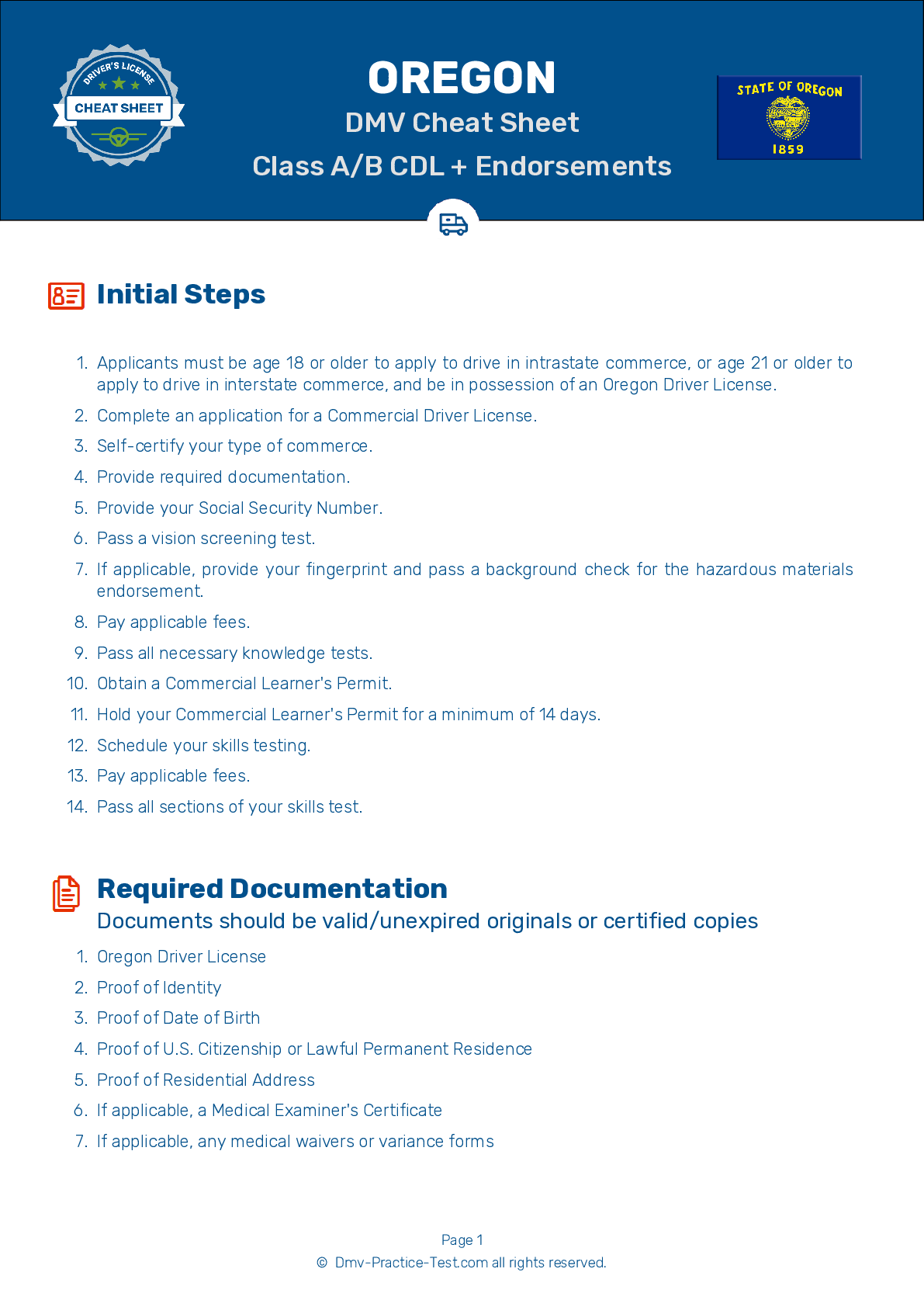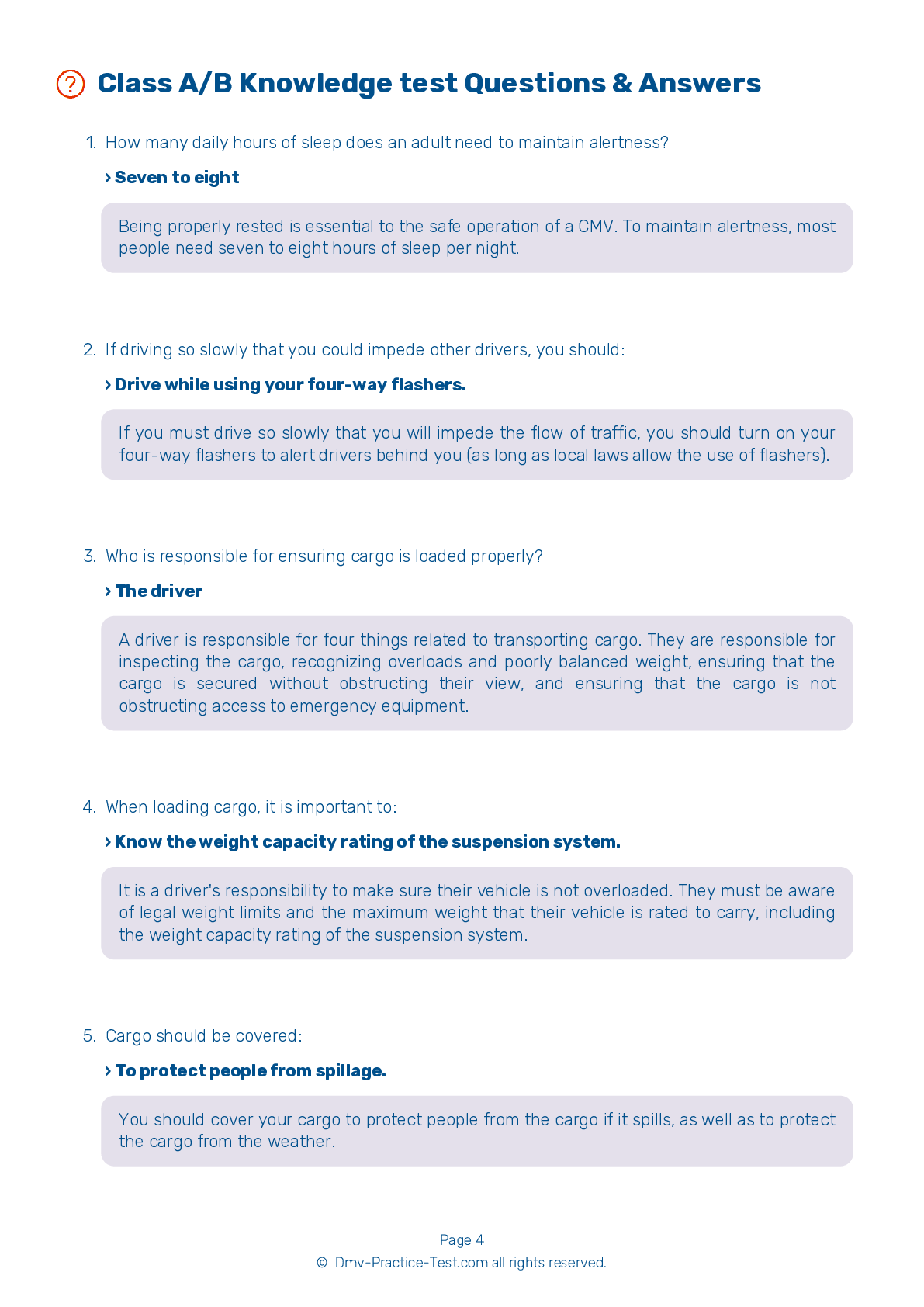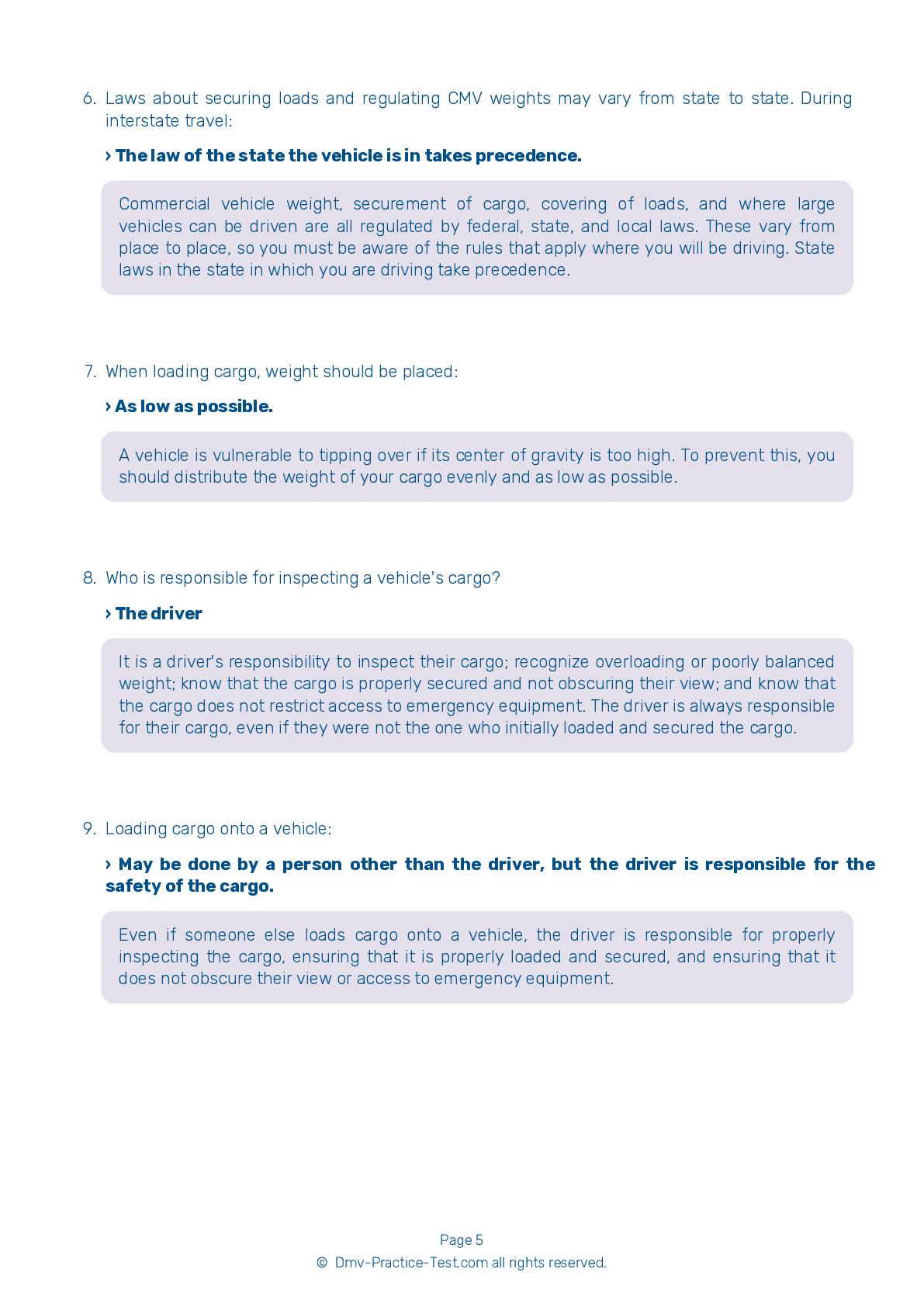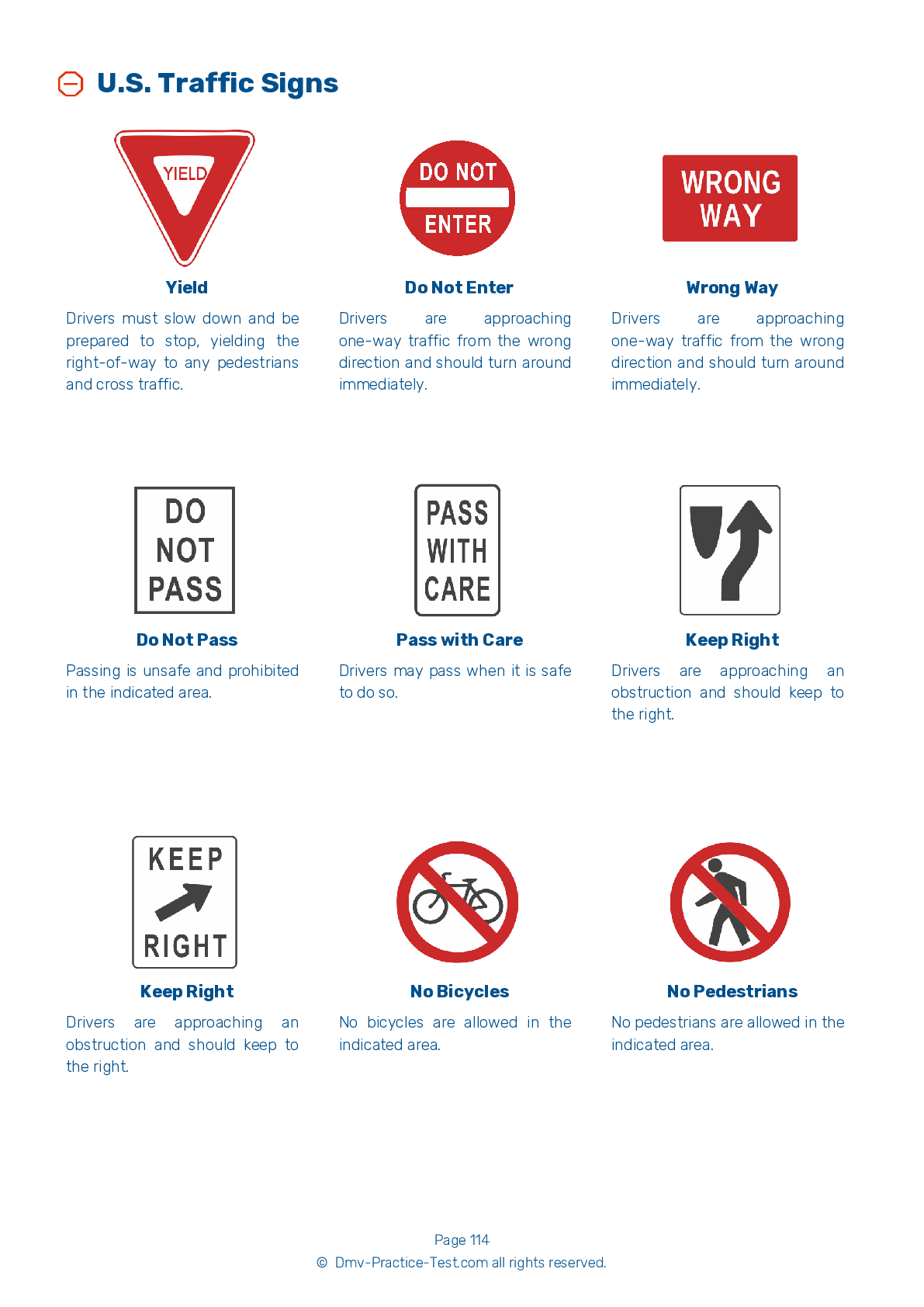Class A Driving Test | Oregon 2025 #1 Page 4 of 7
Train for FREE online with our Oregon class A license test. The official exam test consists of several obligatory parts, with all of them checking your knowledge of different blocks of road rules. If you need to obtain a OR CDL class A permit in 2025, practice as much as possible. Free sample tests published on our website will help you check and improve your knowledge and boost your grades. Please bear in mind that CDL class A requirements may vary from state to state.
22 . During the vehicle inspection test, you must be able to do all of the following, except:
During the pre-trip vehicle inspection test, you will be asked to indicate where the dipstick is located. You will need to show that the oil level is within a safe operating range and above the refill mark.
23 . Belts in the engine compartment should be:
When inspecting your vehicle's engine, check the belts for tightness and excessive wear. The amount of "give" that is safe for each belt in a given engine will vary, so learn what is appropriate for your vehicle.
24 . During the vehicle inspection test, you must be able to do all of the following, except:
During the pre-trip vehicle inspection test, you will be asked to indicate where the power steering fluid dipstick or reservoir sight glass is located. You will need to show that the power steering fluid is within a safe operating range.
25 . If coolant has to be added to a system without a recovery tank, you should:
Before adding coolant to a system without a recovery or overflow tank, you must turn the engine off and wait until it cools. Use gloves or a thick cloth to protect your hands. To release the pressure seal, turn the radiator cap slowly to the first stop.
26 . When stopping in an emergency situation, you should:
If you need to make an emergency stop, you can use either the controlled braking method or the stab braking method. It's important to brake in a way that keeps your vehicle in a straight line but will still allow you to turn if necessary.
27 . How many daily hours of sleep does an adult need to maintain alertness?
Being properly rested is essential to the safe operation of a CMV. To maintain alertness, most people need seven to eight hours of sleep per night.
28 . If a tire fails, you should:
Using the brakes after a tire failure could cause you to lose control of your vehicle. Unless you're about to hit something, stay off of the brake until the vehicle has slowed sufficiently.
See the exact questions that will be on the 2025 Oregon DMV exam.
99.2% of people who use the cheat sheet pass the FIRST TIME
Lillian MCcranie explains how our CDL study guide was helpful in passing the exam and recommends it to everyone.
Cameron tells us how he purchased the CDL exam, and found it to be a useful tool which helped him pass the exam and find a job.



